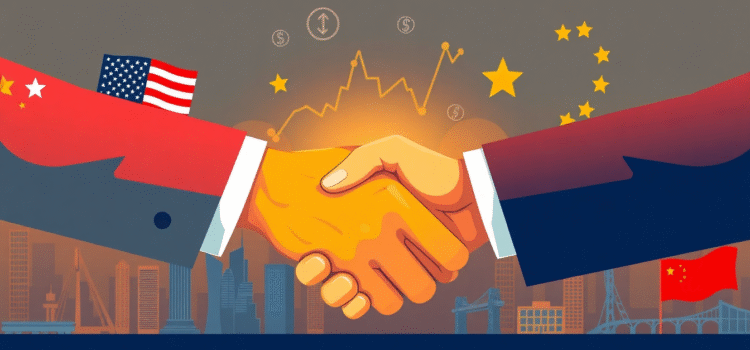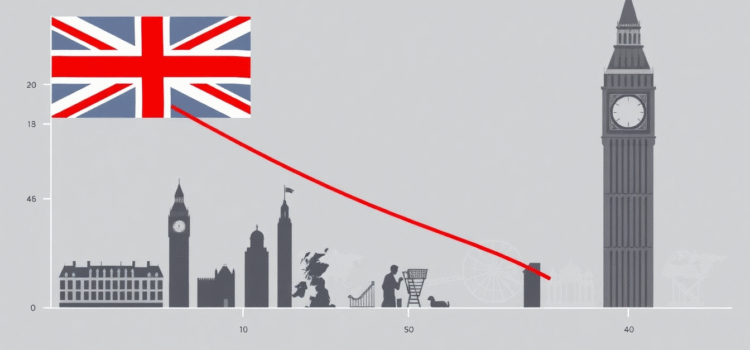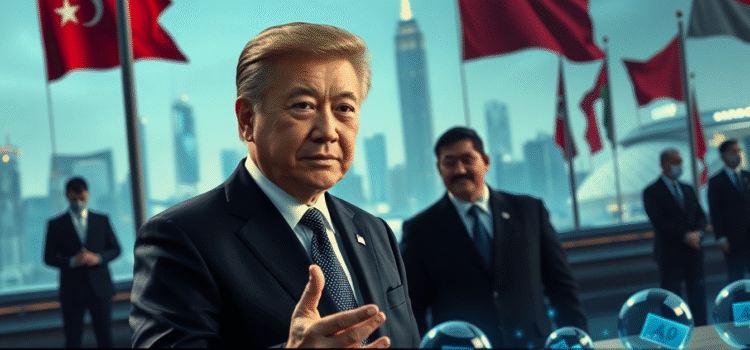
US-China Tariff Truce: A Boost for the Magnificent 7 Stocks Amidst 20% YTD Market Rally
Introduction
The recent thaw in US-China trade hostilities has sparked optimism in the financial markets. As tariff tensions ease, there’s a growing belief that the so-called “Magnificent 7” stocks, consisting of major tech players such as Apple, Microsoft, Alphabet, Amazon, Nvidia, Tesla, and Meta, are set to benefit greatly. As these giants prepare to capitalize on reduced tariffs, the overall stock market has already seen an impressive 20% year-to-date rally. This post will delve into how the US-China tariff truce may propel these tech titans and sustain the upward momentum of the stock market.
The Potential Impact of the US-China Tariff Truce on the Magnificent 7 Stocks
The US-China tariff truce represents more than a mere pause in trade hostilities; it offers a potential long-lasting solution that could lower operational expenses for the Magnificent 7 stocks. By minimizing geopolitical risks, these companies can bolster investor confidence and reassure stakeholders who have been wary of trade-related uncertainties affecting their bottom line.
The implications of this truce resonate deeply within these tech corporations. With the reduction in tariffs, there’s a potential to not only enhance profit margins but also to allocate resources toward innovation and expansion, further strengthening their positions in the global market.
The Road to a 20% YTD Market Rally
The technology sector has largely driven the 20% YTD market rally seen in 2023. Robust performances from companies within the Magnificent 7 group have fueled investor enthusiasm, pushing stock prices higher and enhancing market valuations. Given their substantial influence, a reduction in trade barriers further bolsters growth trajectories.
Trade Deal Impact: Market Dynamics Refined
Reduced trade tensions and tariffs signify a promising shift for global markets. By potentially easing cost burdens on tech manufacturing and exports, the trade deal impact could accelerate the growth of these technological juggernauts. This change would not only benefit individual companies but also stimulate broader stock market growth in 2023.
Increased Investment Opportunities and Confidence
As a result of the improving economic landscape, the prospects of investing in tech stocks remain appealing. For stakeholders, this translates to potential long-term gains and diversified portfolios. As the market anticipates more stable US-China trade relations, investors are incentivized to take advantage of emerging opportunities in this sector.
Key Effects of the Tariff Truce on Stock Market Dynamics
- Improved corporate profit margins and stakeholder value.
- Enhancement in shareholder confidence, driving higher stock valuations.
- Accelerated growth opportunities in innovation and technology development.
- Reduced geopolitical risk leading to a more stable investment environment.
Conclusion
In conclusion, the potential resolution of tariff issues between the US and China signals a positive shift for the global economic climate. By potentially lowering operational costs and enhancing market stability, the Magnificent 7 stocks are poised for continued growth. As investors seek reassurance in these evolving trade dynamics, they stand to benefit from this newly invigorated market landscape. Readers are encouraged to share their thoughts and insights on the unfolding trade relations and stock market performance in the comments below.
Sources
Visit the following links for more information:
FAQ
What is the US-China tariff truce impact on the Magnificent 7 stock performance? The US-China tariff truce provides these tech giants with lower operational costs, higher profit margins, and reduced geopolitical risks, potentially boosting stock performance.
How have the Year-to-date market rally effects been influenced by the Magnificent 7 stocks? The Year-to-date market rally is largely attributed to the robust performance of the Magnificent 7 stocks, driving market valuations upwards by leveraging tech sector growth.
What are the China tariff resolution benefits for 2023 stock market growth? Reducing tariffs reduces corporate expenses and risks, enhancing investor confidence and supporting continued 2023 stock market growth driven by a more favorable trade environment.
How do US-China trade relations affect tech stocks? Improved US-China trade relations lower barriers to trade, making it easier for tech companies to operate internationally, positively affecting stock valuations and investor sentiments.



















Comments